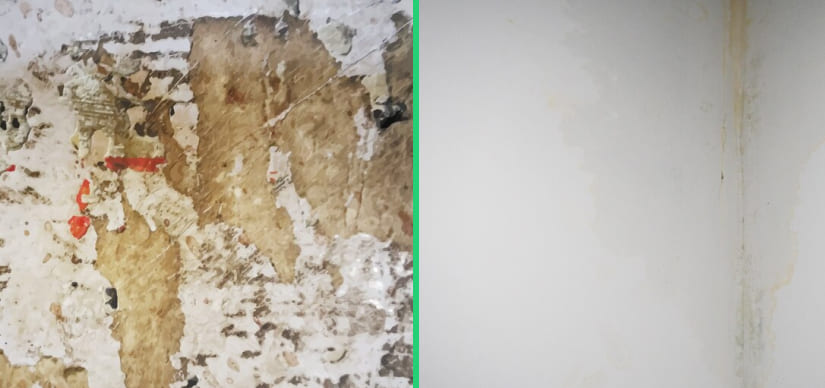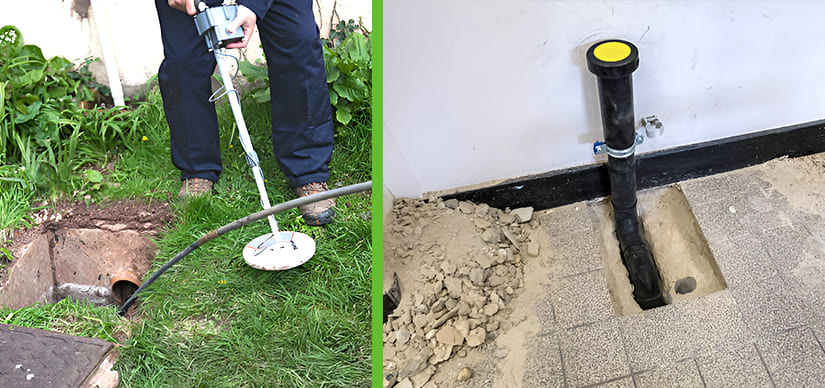8 Key Signs of a Slab Leak You Shouldn’t Ignore
Views : 1135

Introduction
For homeowners, leaks from slabs are a significant problem. They develop from the possibility of water damage brought on by leaking pipes beneath the foundation of your house.
This doesn’t look like your typical minor water leak. Instead, it’s a severe problem that could cause significant water damage if ignored. This blog post will discuss how to spot a slab leak in Riverside and its eight primary indicators.
What Causes a Slab Leak in Riverside?
Slab leaks can have several causes. If your house was built poorly or with inferior materials, the original plumbing system may eventually give way beneath the pressure. Additional potential reasons could be corrosion and abrasion. When water passes through pipes, the pipes grow and contract. When pipes are placed close to aggressive substances like concrete or gravel, they may leak and experience premature wear. Abrasion and damage may result from the friction.
Plumbing systems made of metal or copper are prone to corrosion over time when they come into contact with acidic or hard water soil. Damaged pipes’ walls and possible leaks may result from this. Corrosion may eventually cause leaks and ruptures. Exceptionally high water pressure can explode pipes. Soil shifts caused by environmental conditions can also cause leaks. Earthquakes are one such environmental condition. Drastic weather changes can also lead to soil shifts.
Key Signs of a Slab Leak in Riverside
1.You’re Seeing an Increase in Water Bills
If your water bill has increased over the past few months, even if your water usage and prices have remained the same, there may be a slab leak.
The Environmental Protection Agency (EPA) of the United States states that unchecked leaks in homes can waste up to ninety gallons of water every day, which could result in increased energy costs.
Due to slab leaks causing continuous water flow, homeowners typically see a 25% rise in their water bills. If you notice higher utility bills without a corresponding increase in water usage, contact a plumber. He can check for potential leaks. Checking your water meter is another method to identify potential waste.
2.Reduced Water Pressure
Do you not know how to detect a slab leak in Riverside? You ought to examine the water that emerges from your faucets. This is because a drop in water pressure is another obvious indicator of a slab leak.
When the water lines leak, your plumbing system’s overall pressure decreases. If you observe that the showers are becoming less powerful or that your water taps are dripping rather than flowing., it may be time to check your home for leaks.
3.Mold and Mildew Growth
When there is a slab leak, water often finds its way to the floors, promoting the growth of mold and mildew. The absence of visible stains doesn’t rule out the possibility of moisture issues. A persistent moldy smell often suggests hidden water damage. More research must be done to find the cause of the smell. Prompt resolution of the matter can avert additional harm and health hazards.
4.The Ruthless “Hot Spots”
Slab leaks are frequently caused by hot water lines. When there is a leak in hot water pipelines and it gets through the slab, the flooring right above it could get heated. Warm spots on the floor can indicate a hot water pipe leak. This type of leak can cause significant damage if not addressed. Hire plumbers for slab leak detection in Riverside right away. The most obvious examples of these spots are strong flooring materials, like laminate and linoleum.
5.Floors Warping or Planks bursting
Flooring over the ground may sustain damage from slab leaks that go unnoticed. Due to wood’s high absorptive capacity, hardwood floors may begin to warp after extended exposure to moisture from leaks. Other types of flooring, such as laminate or linoleum, may also appear darkened or warped.
Additionally, household planks are prone to distortion, and if the impact is severe enough, they may require substituting. Subterranean moisture can harm wood or vinyl floor planks.
6.Places with Pooling Water
Sometimes, visible water can gather from a slab leak outside or inside your home. If water is gathering outside your home on a normally dry day, you should investigate the potential of a slab leak in Riverside. Likewise, search your house for areas where standing water may be present. Pay special attention to the main floor. Check areas close to plumbing appliances like your washing machine. Standing water can indicate a leak or plumbing issue.
You may also see random water puddles on your interior floor, which raises the possibility of a significant water leak under the slab.
7.Wall or Baseboard Cracks
Slab leak moisture can cause a sequence of splits along the bottom of walls or floorboards as it erodes indoor flooring. If you begin to notice strange cracks in these regions, contact a professional for an assessment.
Often, the cracks start as tiny fissures that progressively get bigger over time. If enough fractures go untreated, your baseboard may weaken and require replacement.
8.The Sound of Flowing Water
This is among the simplest methods for slab leak detection in Riverside. Switch off the entire water supply and see if you can still hear running water. Check for leaks if you hear water running while no water outlets are in use. This covers the moments when appliances that use water are not in use. It suggests that there might be a leak in the slab that requires immediate attention.
Now that we have learned of the obvious indications of a leakage in the slab, we must decide our next course of action. We must check what we can do to make them better.
How Can A Slab Leak in Riverside Be Fixed?
There are already several ways to address a slab leak. That is contingent upon the upkeep funds and the expert’s recommendation. The price of repairs can range widely, from a few hundred dollars to several thousand dollars.
1.Repiping
This simple fix for a leaking slab will only save you a few thousand dollars. With this system, you can reach the plumbing in your foundation.
A new path is created to access the plumbing. This path can be exterior to the foundation in your backyard or attic. This method allows for easier access and repairs. It also quickly fixes a leaky concrete slab and spares you the hassle of removing your home’s floors.
2. Replacing the Damaged Pipe’s Dissection
An additional option for fixing a slab leak is replacing the damaged pipe section by drilling within the slabs. Nevertheless, eliminating the tile floors is untidy and may harm the flooring, raising the cost of floor repairs.
Final Takeaway
A slab leak in Riverside is hazardous for your house’s foundation and finances. You can prevent extensive damage by acting quickly to identify the warning signs. These warning signs include rising water bills and decreased water pressure. Other signs are mold growth, hot areas on floors, and distorted flooring. You might also notice a collection of water, cracks in the wall and baseboards, and the sound of running water.
Take action when a significant blow to your wallet or a web of cracks appears in your foundation. Slab leak detection is essential. Get in touch with a licensed plumber right away. Early identification and repair are necessary to effectively resolve the problem and lessen its impact on your house and finances. Recall that being proactive is preferable to having an expensive, leaky nightmare.
Call EZ Plumbing immediately to avoid an expensive slab leak in Riverside. We offer free estimates and prompt, dependable service.



